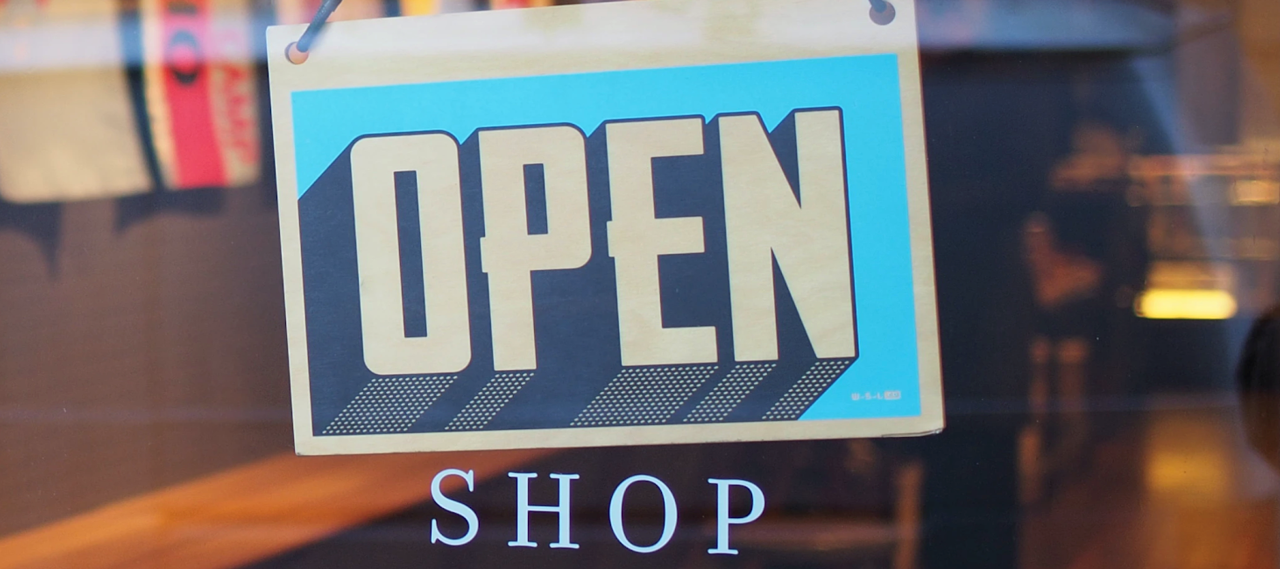Are limited mode options restricting the potential of your service? intO’s Business Lead, Jonny Jiang, has had this question on his mind, this month, while working with one of his RCA students on the D&AD / Barclays New Blood Awards brief. In this article, Jonny examines how thinking in terms of modes can benefit the customer experience.
The dark mode trend that’s circulating in the UX design world is a simple illustration of how modes can benefit users. By providing a function that switches off bright colours in the user interface, the dark mode facilitates a more comfortable use of digital screens at night. It shows that the changing scenarios over the course of a user’s daily life have been considered. And there are countless other examples of modes in the UX world. For example, J Paul Neeley, a speculative designer from RCA, has designed a piece of web code that allows a website to close its site to visitors at midnight (see more details here). He explains that this shows consideration for the wellbeing of users, reminding them of the importance of switching off and getting a good night’s sleep.
Moving from UX design to industrial design, the application of modes in product function can also be found in many well-designed objects. For example, the sport and off-road modes in premium cars extend the possibilities of use cases. Furthermore, they also reinforce the idea that the car has been designed with the user’s inspirational lifestyle in mind. Take Land Rover as an example. Its sophisticated off-road modes allow the car to adjust itself in response to the effortless turn of a mode dial.
But what about modes in services?
So what about the modes in services? Are there any examples that we can learn from? Generally speaking, music streaming services are really good at providing modes for their users to select from. Spotify creates lists of modes that are based on users’ moods, ranging from I want to chill to I want to party. It also provides the modes based on seasonality, from Trending today to My weekly discovery. Compared to the past, when music services were centred around musicians and albums, these services are now competing with modes that offer personalisation for individual customers. The application of modes in music streaming services is becoming more powerful all the time, analysing and reacting to user behaviours with sophisticated machine learning and AI. For many users, this provides a much richer, tailored experience.
However, apart from these modes in music services, most services in other industries are only providing two simple modes: switch-on mode and switch-off mode. These two modes are basically the opening and closing time of retail stores, banks and other service providers. The customers rarely have the ability to select alternative modes when using and interacting with the service provider and the service provider only has one official mode with which to deal with the customer.
Trial: designing modes into banking services
Wouldn’t it be better if there was a ‘sport-mode dial’ for the customers engaging with services? What if there are many more modes beyond open and closed? In the past few weeks, this was the question that inspired my RCA student, Tina, as she responded to the Barclays / D&AD New Blood Awards challenge. The brief was to explore ways in which Barclays might better support their banking customers who are dealing with mental health issues.
From her user research, Tina discovered that mental health is not an open or closed situation. People experience varying degrees of mental health issues in different stages of their lives. Some are very serious and require medical intervention. Others may be treated with good rest and talking to family and friends. Tina’s desktop research indicated that everyone – regardless of age, gender or work differences – may experience a moment in their life when stress, anxiety or depression will lead to them seeking mental health support.
Inspired by the sport-mode dial in cars, Tina and I found the metaphor of driving on roads an interesting way to understand mental health circumstances. Going through the mental health journey in life is like driving on different road conditions: sometimes we get into muddy sand, and a steep climb is usually followed by a return to a level gradient. As with those situations, additional help is very important for people facing mental health challenges. Tina spoke to a number of experts who provide professional mental health support. She quickly discovered that a mental health journey can be segmented into different phases and stages of interventions. These stages became a foundation for Tina’s design intervention: to redefine the modes of interaction in banking services with consideration to mental health journeys. Learning from the dark mode in UX, Tina started to design two extra banking modes for the existing Barclays banking app. She called these Soar mode (supporting your difficult climb) and Nest mode (helping you to recover). The vision would allow users to select the interaction modes that best suited their mood, and the user interfaces and functions would be re-prioritised based on the stage of the user’s mental health journey. This really excited many of the participants in Tina’s testing sessions. You can learn more about her project in the forthcoming online degree show at RCA.
In summary, this new design angle of building modes in services should be very refreshing for financial services. It should challenge us to rethink different modes in services that are beyond open and close.
What about other services?
Modes have the potential to innovate many more sectors than fin-tech. How can we re-appraise the services that are currently provided by businesses and organisations? How might mode design lead to improvements in the customer experience and operation? Tina and I will continue to collect and compare other examples and opportunities. In the meantime, I’m looking forward to having conversations with intO’s clients and prospects, about how the sport mode dial can be reconfigured for individual service businesses.
 Jonny is the Business Director at intO. With a background in service design, he has developed his craft and expertise in design research for innovation and business transformation, and is passionate about delivering transformative effects for clients and their customers. His work features a combination of holistic user-experiences and competitive advantages, to shape business innovation. You can contact Jonny at jonny@studio-into.com or LinkedIn.
Jonny is the Business Director at intO. With a background in service design, he has developed his craft and expertise in design research for innovation and business transformation, and is passionate about delivering transformative effects for clients and their customers. His work features a combination of holistic user-experiences and competitive advantages, to shape business innovation. You can contact Jonny at jonny@studio-into.com or LinkedIn.
Lead image credit: @mikepetrucci
Posted on June 26th, 2020
Business Publications Innovation


 Jonny is the Business Director at intO. With a background in service design, he has developed his craft and expertise in design research for innovation and business transformation, and is passionate about delivering transformative effects for clients and their customers. His work features a combination of holistic user-experiences and competitive advantages, to shape business innovation. You can contact Jonny at
Jonny is the Business Director at intO. With a background in service design, he has developed his craft and expertise in design research for innovation and business transformation, and is passionate about delivering transformative effects for clients and their customers. His work features a combination of holistic user-experiences and competitive advantages, to shape business innovation. You can contact Jonny at 
